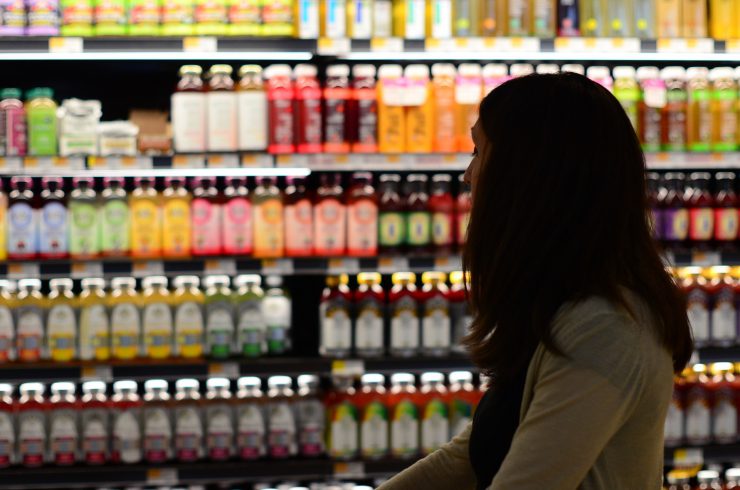
Depending on how the store is staffed, and the length of lines at the checkout, your weekly grocery shopping can range from quick and easy to exhausting and frustrating.
Amazon is working to help customers avoid the long check-out lines by testing a cashier-free store concept. Customers need three things to shop there:
- A smartphone
- An Amazon account
- The Amazon Go app
How Does Amazon Go Work?
Customers enter the store and wave their phone screen (equipped with a QR code from the app) to open the gate. As they move around the store and shop, the app keeps track of all of the items they have selected for purchase.
The technology also recognizes if a customer decided to put an item back onto a shelf and adjusts their purchases accordingly. Once a customer has completed their shopping; they are free to leave the store. A receipt from Amazon will be sent to their phone for the items purchased.
Creating The Cashier-Free Shopping Experience
Right now, the test store is more like a high-end convenience store than a full-blown grocery store. In fact, the store is relatively small (1800 square feet) and offers mostly packaged foods, pre-made foods, and meal kits. Currently, Amazon Go customers can’t purchase unpackaged produce and personal items, technically, the experience is not totally cashier free — there’s an employee in the alcohol section checking IDs.
Amazon has not shared much information on the technology used to make Amazon Go work, except that it includes a mixture of artificial intelligence and even some of the technologies used in self-driving vehicles, as well as something called computer vision.
What is Computer Vision?
Computer vision includes methods for acquiring, processing, analyzing and understanding images and high dimensional data from the real world in order to produce numerical or symbolic information in the form of decisions. The more strides that we make in computer vision and artificial intelligence the more that we will be able to create technology that makes everyday tasks easier and less time-consuming.
What Are The Cons of Amazon Go?
Like any new technology, Amazon Go has caused some concerns. Here are the potential downsides:
1. Privacy Issues
The tracking technology gives off a bit of a “Big Brother” vibe and for some, creates anxiety about such a large retailer knowing which brand of toilet paper they use.
2. Must Have a Smartphone
Shoppers must own a smartphone, which excludes anyone who cannot afford one.
3. Cashiers Out of Work
If other retailers follow suit, millions of cashiers could lose their jobs as the check-out process becomes automated.
What Are The Pros of Amazon Go?
1. Creation of New Jobs
New technology creates more opportunities and opportunities, in turn, create more jobs.
2. Reducing Food Waste
Shopper data can help retail chains to make better predictions on buying habits. This will allow them to reduce food waste.
3. Increased Revenue for Retailers
As this technology is adopted by retailers the use of big data analytics will give all retail chains the ability to improve their inventory purchases which will reduce operating costs and increase bottom lines.
How Will Amazon Go Evolve?
The Amazon Go test store is a major achievement in convenience shopping. It’s likely that we will begin to see similar technology become widespread across many types of retail experiences. However, no matter what the advances in technology, cashier-less stores will continue to need to consider things like theft, and breakdowns in the technology itself.
While it provides a ton of convenience, check-out free shopping also eliminates the human touch that many shoppers find helpful. The question is, how will the customer experience evolve as Amazon Go! and other check-out free shopping enterprises continue to test and adjust their operations? Maybe they’ll study the in-between options like online grocery ordering that includes curbside or home delivery –by humans– for clues on how to blend technology and the human touch.
It is easy to predict that retail chains will find it easier to grab a larger percentage of market share; as long as they can listen and accommodate to a wide range of customer preferences and emerging technologies.

